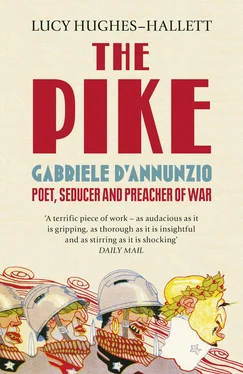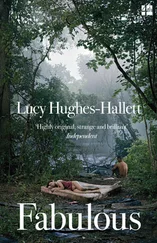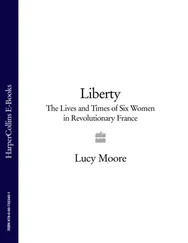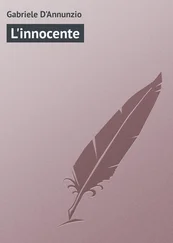The d’Annunzio who wrote the letters was as much a fictional construct as the girl to whom they were addressed. The Sardinian escapade ended with a scene that might have been lifted from Mozart’s Don Giovanni. D’Annunzio and his two friends, who had been overly familiar with the local women, were chased down to the ferry by a crowd of hostile male Sardinians. A comical (though probably frightening) episode, it gives us a glimpse of the real-life ‘wagtail’ d’Annunzio – a very young man strutting and flirting on a trip out of town. One of his companions on the voyage wrote: ‘He would be off and then, before he’d even been missed, he’d be back like a cat with a mouse in his jaws’ – the ‘mouse’ being a young woman.
Writing to Elda he was a very different person, palpitating with love and anxiety, frequently suicidal. ‘I am surrounded by a terrifying abyss,’ he wrote after she had threatened to break off their relationship. ‘I am alone on a pinnacle of rock. I see no light, I have no hope, you have taken everything from me.’ His very last letter must have been bewildering for her to read. ‘We love each other always,’ he writes, but then, ‘the memories disperse inexorably like empty dreams.’ He dwells with repellent arrogance on the unhappiness he’s caused her. The letter ends in a cruel sequence of contradictions. ‘Addio’, he writes repeatedly. He is sad, he says. To write more will only make her sad as well. ‘Addio’ again, but then ‘I kiss your mouth with a desire beyond words.’ More maddening pity – ‘Oh my poor martyr!’ Again ‘Addio, addio.’ And then finally, the by-now-evident-untruth twice affirmed: ‘Yours, always yours.’ He was just about to turn twenty. Four months later he was married, and not to Elda.
In 1921, after a silence of thirty-eight years, Giselda wrote to d’Annunzio asking for his permission to sell his letters. She hoped that they would fetch enough money to allow her son to marry. She was unusual among d’Annunzio’s women in having kept them so long. At the end of each of his subsequent love affairs he wrote his once-beloved woman a letter full of mellifluous expressions of regret for the fading of a great passion, but ending with a brusque request for the return of his letters. He replied to Giselda by suggesting she hand the letters over to his lawyer. He did not invite her to visit him.

HOMELAND
THE BOISTEROUS GROUP who burst into Gabriele’s room, making a distracting racket with the fencing foils, were not his only companions in the Abruzzi. A few miles south of Pescara, in Francavilla, lived the painter Francesco Paolo Michetti, who was to become the most loyal and generous of all d’Annunzio’s friends. Michetti was eighteen years older than Gabriele, old enough to become one of his extra fathers, and a successful artist. During the summers he was joined in Francavilla by a creative group of comrades who called themselves – with playfully blasphemous arrogance – the ‘Cenacolo’ (the word translates as dining club, or dining room, but in Italian it is most frequently used of the Symposium over which Socrates presided, or of Christ’s Last Supper). The most constant guests were Francesco Paolo Tosti, the composer who would later set many of d’Annunzio’s verses to music, and the sculptor Constantino Barbella.
By the summer of 1880, when Gabriele was seventeen, with another year of school ahead of him, he was already an established member of the Cenacolo, riding over from Pescara or moving in to stay, initially in Michetti’s small house by the sea and later in the rambling deconsecrated convent which Michetti transformed into his studio and home. ‘Oh beautiful days of Francavilla!’ he wrote later, recalling the ‘solitary beachside house’, through all of whose rooms blew the salty sea wind: ‘There life bloomed.’ He was, by more than a decade, the youngest of the group, several of whom were men with well-established reputations. If Nencioni and his other invited mentors had been the tutors who saw him through his secondary education, the Cenacolo was his university. He and Michetti talked and talked, ‘seven hours on end’, he told Elda, ‘and always about Art, always about Art’.
It was not, primarily, a literary group. Among Michetti’s friends, poets were outnumbered by artists, musicians, scholars. One of d’Annunzio’s great strengths as a writer and as a cultural commentator was that he was as knowledgeable about music and the visual arts as he was about literature, and valued them as highly. He was always intensely observant of visual effects. He was an exhaustive sightseer. His plan to visit the exhibition of contemporary art in Milan was not just a ploy to put Elda off. He was really excited by the prospect. Artworks perform important functions in his novels and plays, as symbols, as points of reference, as inspiration, as aphrodisiacs. One of his heroes models himself on a portrait by Leonardo. Another propositions a woman by telling her that he can see from her hands that her naked body would be as lovely as that of Correggio’s Danae. His poetry is full of colour. He frequently dresses his novels’ heroines in grey, but not just any old grey. He specifies each shade: the grey of ashes, of pigeon feathers, of pewter or a pale sky. At Francavilla he was learning to see through his painter-friend’s eyes. His early stories are full of brilliant unexpected colour: scarlet poppies luminous against a bleached background of dry rock, sky the colour of beryl or turquoise, purple mountains, a beggar’s crimson jacket, a river bright green with reflected trees and – over and over again – the almost fluorescent brilliance of orange and tawny-brown sails on a silver or lead-grey sea. These were the scenes Michetti painted. D’Annunzio’s task was to convert his images into words.
His ear was as discriminating as his eye. His most anthologised poem, La Pioggia nel Pineto (Rain in the Pine Wood), is a piece of beautifully modulated word-music which at once describes and imitates the sounds made by rain falling on leaves. He boasted that he once astounded the conductor Toscanini by detecting which instrument in an orchestra was out of tune. Throughout his life music was one of his greatest pleasures. ‘No one,’ wrote Romain Rolland, ‘could hear music better than he.’
At Francavilla he could talk about composition with composers, and observe how a sculptor and a painter gave form to their visions. There he would write, so he tells us, in rooms papered with his host’s sketches, with the sculptor Barbella modelling a bust beside him, with another comrade playing Schubert on a mandolin, and Tosti singing the refrain of a lullaby. ‘[Michetti’s] villa is truly the Temple of Art and we are its priests.’
It was in that temple that d’Annunzio began to see his native region as a fit subject for literary treatment. With Michetti he embarked on long rides into the region’s mountainous hinterland. These outings took him into a world at once archaic and exotic. The rural people were ‘almost dwarfs, with snub noses and flattened lips’, but dressed with a kind of ‘oriental’ splendour. D’Annunzio described a wedding party as a riot of ‘silk dresses, brocade scarves, big gold earrings; toasts accompanied by the delirious-making hum of guitars … gunshots … hailstorm of confetti … joyful cries’.
The members of the Cenacolo all shared an interest in the traditional culture of the Abruzzi. Tosti was collecting folk songs. Michetti’s friends also included Gennaro Finamore, author of a vocabulary of the Abruzzese dialect and a transcriber of folk tales, and the ethnologist Antonio de Nino, whose Abruzzese Customs and Costumes ran to six volumes. The poet Bruni wrote verse in the Abruzzese dialect, which Tosti set to music for a ‘chorus of youths’ to sing during an al fresco ceremony on Easter Monday. The subject of all Michetti’s art, wrote d’Annunzio later, was the ‘ancient vital race of the Abruzzi, so vigorous, so thoughtful, so full of song’.
Читать дальше













